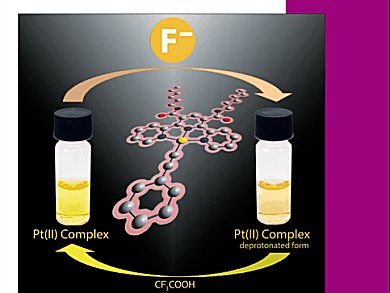October 20—26, 2014 is International Open Access Week. Now in its 7th year, this event highlights the importance of Open Access and its prevalence in present-day research and scholarship.
Open Access Week began in the USA in 2007 when two Open Access advocacy groups, the Students for Free Culture and the Alliance for Taxpayer Access, organized a “National Day of Action for Open Access”. This event eventually turned into a global “Open Access Day” in 2008 and a full week in 2009 [1].
Open Access Week is now an annual event held in the last full week of October. With a view to increasing public awareness and support, during this time, institutes, organizations and individuals who are advocates of Open Access hold events and release a variety of media, such as articles, interviews and artwork, to mark the occasion. Visit openaccessweek.org to find out more.
Throughout Open Access Week, ChemistryOpen will feature some of its most popular articles as well as some articles about Open Access on its Facebook and Twitter pages. ChemistryOpen is an open-access general chemistry journal co-owned and supported by ChemPubSoc Europe, a group of 16 European chemical societies. To celebrate its impressive first Impact Factor of 2.938 (Thomson Reuters 2013 JCR), article publication is free until June 2015!
For almost three years, ChemistryOpen has published a variety of interesting, well-cited articles. Here are the journal’s top five most-accessed articles:
 Benchmark Study of the Performance of Density Functional Theory for Bond Activations with (Ni,Pd)‐Based Transition‐Metal Catalysts,
Benchmark Study of the Performance of Density Functional Theory for Bond Activations with (Ni,Pd)‐Based Transition‐Metal Catalysts,
a Full Paper by S. Grimme et al.
DOI: 10.1002/open.201300012 Show Me the Money! How, as a Chemist, Can I Find Funding for Open-Access Publishing?,
Show Me the Money! How, as a Chemist, Can I Find Funding for Open-Access Publishing?,
an Editorial by K. Hindson and H. Ross
DOI: 10.1002/open.201200047
► Covered by ChemistryViews.org
Money for Open-Access Publishing, Saskia Neubacher, ChemViews Mag. 2013. Facile Oxidative Rearrangements Using Hypervalent Iodine Reagents,
Facile Oxidative Rearrangements Using Hypervalent Iodine Reagents,
a Full Paper by T. Wirth et al.
DOI: 10.1002/open.201200037 Efficient Difluoromethylation of sp3 Carbon Nucleophiles by Bromodifluoromethylation Reagents with Organic Bases,
Efficient Difluoromethylation of sp3 Carbon Nucleophiles by Bromodifluoromethylation Reagents with Organic Bases,
a Communication by N. Shibata et al.
DOI: 10.1002/open.201200033 Metal‐Conjugated Affinity Labels: A New Concept to Create Enantioselective Artificial Metalloenzymes,
Metal‐Conjugated Affinity Labels: A New Concept to Create Enantioselective Artificial Metalloenzymes,
a Communication by J. Eppinger
DOI: 10.1002/open.201200044
► Covered by ChemistryViews.org
Enantioselective Organometallic Enzyme Hybrid (OMEH) Catalysts, Saskia Neubacher, ChemViews Mag. 2013.
[1] J. McLennan, Open Access Week declared for 2009, SPARC 5 March 2009.
- Journal: ChemistryOpen
- International Open Access Week
- Interview with Editors of ChemistryOpen, Vera Köster, ChemViews Mag. 2011. DOI: 10.1002/chemv.201000112
Interview with the editors of the new ChemPubSoc Europe journal ChemistryOpen – youngest ChemPubSoc Europe member, but a first in many aspects



